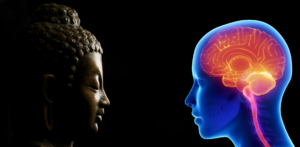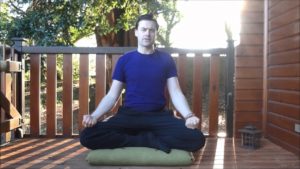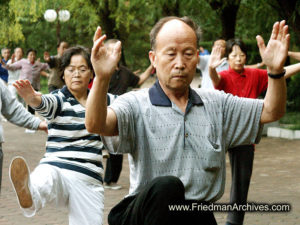Improve Sensory Discrimination with Alternate-Nostril Yoga Breathing
By John M. de Castro, Ph.D.
“alternate nostril breathing, has a long history in Ayurvedic medicine and yoga, where it’s thought to harmonize the two hemispheres of the brain, resulting in a balanced in physical, mental and emotional well-being.” – Paula Watkins
Yoga practice is becoming increasingly popular in the west, for good reason. It has documented benefits for the individual’s psychological and physical health and well-being. It has also been shown to have cognitive benefits, improving memory. Yoga, however, consists of a number of components including, poses, breathing exercises, meditation, concentration, and philosophy/ethics. So, it is difficult to determine which facet or combination of facets of yoga are responsible for which benefit. Hence, it is important to begin to test each component in isolation to determine its effects.
Alternate nostril yoga breathing is a regulated breathing alternating between the left and right nostril that is commonly practiced in yoga. Breathing through each nostril is thought to affect its respective hemisphere in the brain producing differential effects. Recently, it has been shown to reduce blood pressure and increase vigilance and reduce perceived stress.
In today’s Research News article “Changes in Shape and Size Discrimination and State Anxiety After Alternate-Nostril Yoga Breathing and Breath Awareness in One Session Each.” (See summary below or view the full text of the study at: https://www.ncbi.nlm.nih.gov/pmc/articles/PMC6496972/), Telles and colleagues recruited healthy adult males with at least 3 months of yogic breathing practice. They each completed 3 sessions, alternate nostril breathing, breath awareness, and quiet sitting in counterbalanced orders. Each session consisted of three 5-minute practice periods separated by one minute. Before and after each session the participants competed measures of state and trait anxiety and completed a shape and size discrimination task involving inserting “50 coins and squares of different sizes and thickness into 5 slits of a wooden box, where each slit has been especially designed to allow a square or coin of a specific size and thickness to pass through it.”
They found that after the alternate nostril breathing session but not breath awareness or quiet sitting sessions there were significantly fewer error on the shape and size discrimination task. On the other hand, after the breath awareness or quiet sitting sessions but not the alternate nostril breathing session there were significantly lower levels of anxiety.
It would appear that alternate nostril breathing heightens awareness, increasing vigilance allowing for enhanced sensory discrimination ability while breath awareness and quiet sitting are calming reducing negative emotions. It’s interesting that different approaches to the breath have such large differences in their effects. This suggests that further research into the effects of the individual components of yoga practice may be a fruitful approach to understanding and potentially enhancing the benefits of yoga practice.
So, improve sensory discrimination with alternate-nostril yoga breathing.
“Alternate Nostril Breathing effectively reduces cortisol (stress) levels, increases mental focus, enhances immunity, and decreases depression and anxiety, with quick and lasting effects.” – Art of Living
CMCS – Center for Mindfulness and Contemplative Studies
This and other Contemplative Studies posts are also available on Google+ https://plus.google.com/106784388191201299496/posts and on Twitter @MindfulResearch
Study Summary
Telles, S., Vishwakarma, B., Gupta, R. K., & Balkrishna, A. (2019). Changes in Shape and Size Discrimination and State Anxiety After Alternate-Nostril Yoga Breathing and Breath Awareness in One Session Each. Medical science monitor basic research, 25, 121–127. doi:10.12659/MSMBR.914956
Abstract
Background
Yoga breathing techniques like high-frequency yoga breathing (HFYB) and breath awareness (BAW) have been associated with improved performance in the shape and size discrimination task. A PubMed search of the literature revealed that alternate-nostril breathing has been shown to improve performance in attention tasks, but the effect on tactile perception has not been studied. Hence, the present study was designed to assess the immediate effects of alternate-nostril yoga breathing (ANYB) compared to breath awareness on shape and size discrimination and state anxiety.
Material/Methods
Fifty healthy male volunteers ages 20–50 years (group mean ±S.D., 28.4±8.2 years) were recruited. Each participant was assessed in 3 sessions conducted on 3 separate days at the same time of day. The 3 sessions were (i) alternate-nostril yoga breathing (ANYB), (ii) breath awareness (BAW), and (iii) quiet sitting (QS), and the sequence of the sessions was randomly allocated. The shape and size discrimination task and state anxiety were assessed before and after all 3 sessions. Repeated measures analysis of variance (RM-ANOVA) followed by post hoc tests for multiple comparisons, which were Bonferroni-adjusted, were performed to compare data before and after all 3 sessions using SPSS version 18.0.
Results
The errors scores in the shape and size discrimination task showed a significant reduction after the ANYB session (p<0.001). A significant reduction was found in the level of state anxiety after breath awareness (p<0.05) and quiet sitting sessions (p<0.001).
Conclusions
The present results suggest that ANYB: (i) improves performance in a task which requires perceptual sensitivity and focused attention, but (ii) does not reduce state anxiety following this task.
https://www.ncbi.nlm.nih.gov/pmc/articles/PMC6496972/









